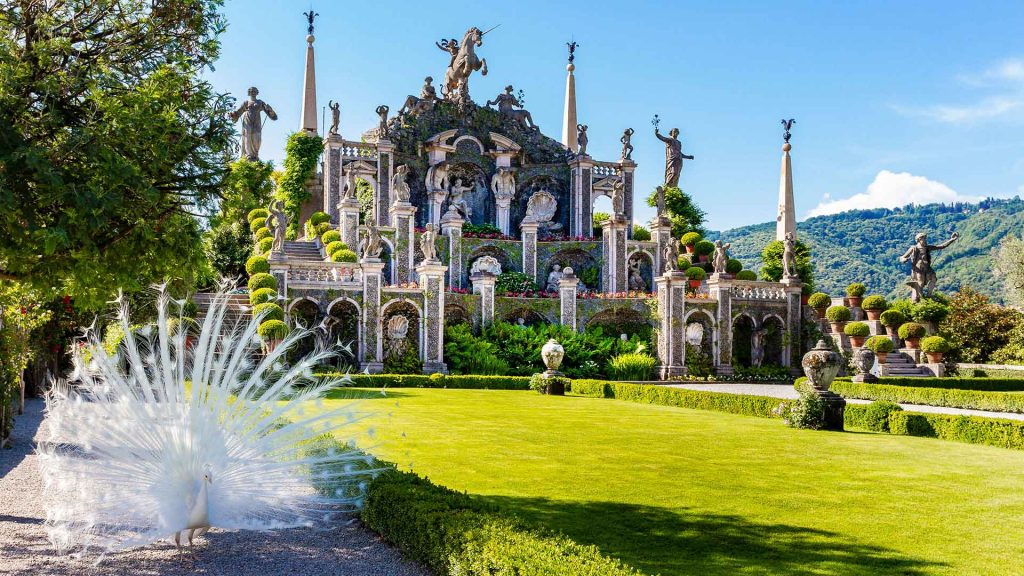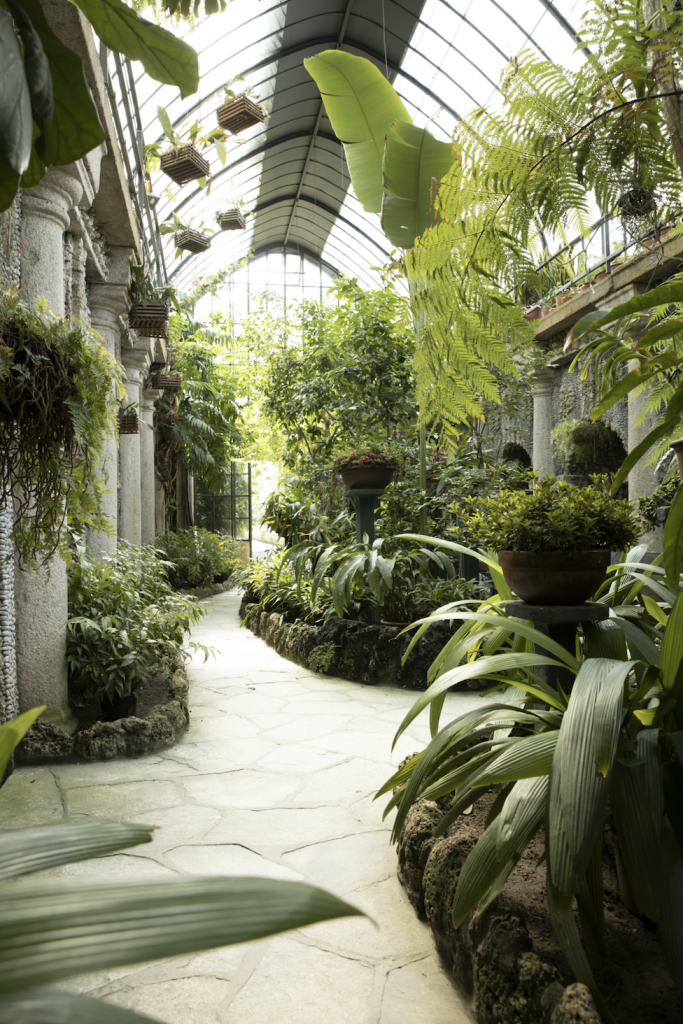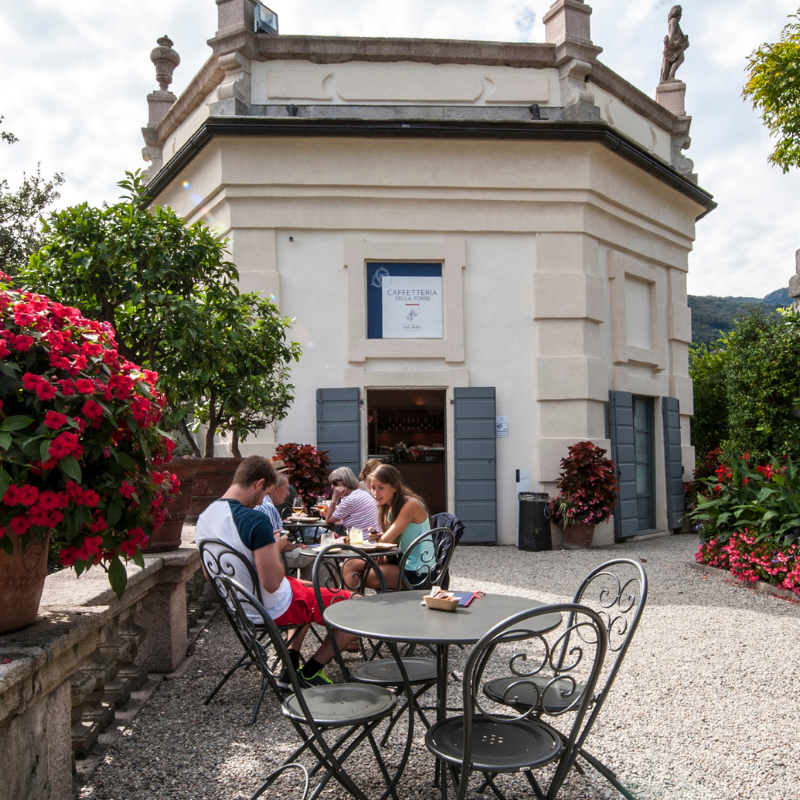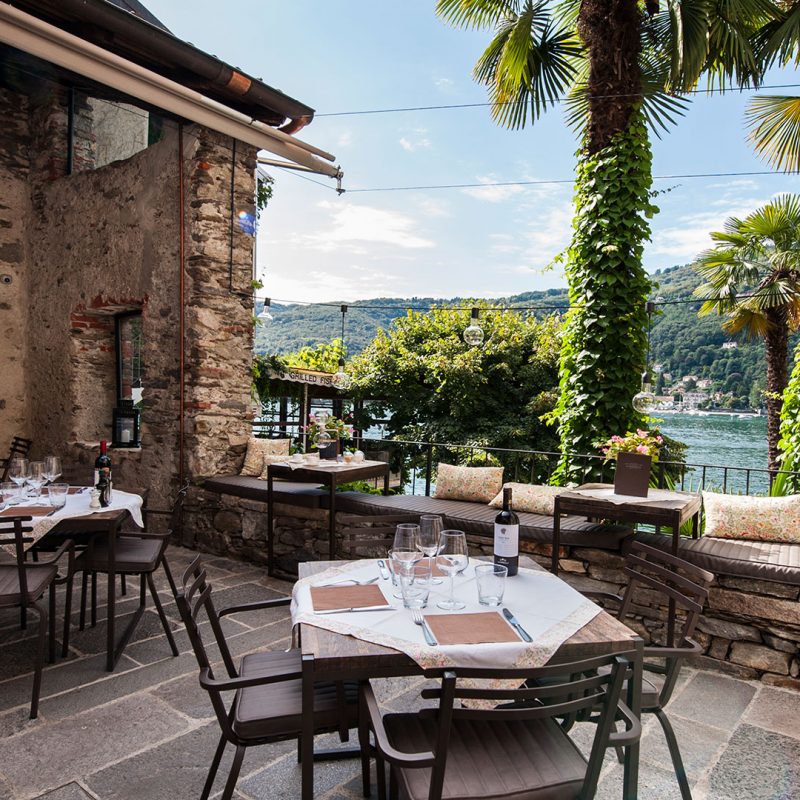History
Isola Bella
It took almost four hundred years and the teamwork of hundreds of architects, engineers, plasterers, painters and cabinetmakers, who have given rise to the extraordinary transformation of Isola bella from a rock of the lake into a place of delights.

Until 1630 Isola Bella was a rock inhabited by fishermen, with two small churches and a few vegetable gardens. The Borromeos, who had already been owners of Isola Madre since 1501, from the first two decades of the 17th century with Giulio Caesar III and Carlo III focused their interest on the island, launching the grandiose project that was to lead to the creation of the palazzo and the garden.
This aim was to be carried forward, extended and defined by Vitaliano VI, who is to all intents and purposes considered the founder of Isola Bella. The work that resulted in the current layout continued without interruption throughout the 18th and 19th centuries, arriving at 1948, when, with Vitaliano IX Borromeo, the Salone Nuovo, the northern façade and the great pier were built.
What to see
Palazzo Borromeo
The Baroque at its most astonishing

A fascinating itinerary between art and history accompanies you through its over 20 rooms.
Heart of Palazzo Borromeo, the Galleria Berthier is a mosaic of over 130 paintings including masterpieces and, following a practise that is recurrent in other noble collections of the period, a number of copies of the great masters of the past of the calibre of Raphael, Correggio, Titian and Guido Reni.
Unique settings are the Sala del Trono [Throne Room], the Sala delle Regine [Queens’ Room], the Salone degli Arazzi [Tapestry Hall] and the Grotte [Caves], born to amaze guests by transporting them into a magical marine world.

c. 1521/22, oil on panel

What to see
The Italian-style baroque garden
Ten terraces bursting with a different colour at every flowering time

The Teatro Massimo is the most important monument in the garden of Isola Bella. Statues, obelisks and fountains are perfectly integrated together with the vegetation of the ten scenic terraces, at the top of which rises the statue of the Unicorn, the heraldic symbol of the Borromeo family.
All around the Theatre is a glorious display of rare flowers and plants: the centuries-old camphor tree, Gunnera manicata, known as the giant rhubarb – the leaves of which can reach two metres in diameter -, the perfumed sweet Osmanthus, the extremely rare Halesia diptera with its flowers that seem like snowflakes, the star anise and the Mexican pine.
During its blossoming period the Parterre of Azaleas is enchanting, and the Garden of Love is a joy for the eyes, composed of boxwood hedges creating green embroidery that is visible from the height of the terraces. Camellias, espaliers of roses in May, oleanders in June and citrus trees and panicled hydrangeas at the height of summer all enliven the Italian-style garden of Isola Bella, where white peacocks roam freely.
Since 2002 the gardens of Isola Bella, together with those of Isola Madre, have belonged to the prestigious circuit of the British Royal Horticultural Society.


#Borromeo Experience
Useful info
Season 2024
The opening of the 2024 season is scheduled from 16 March to 3 November 2024.
Isola Bella is open:
From 16th March to 26th October 2024
Daily from 10:00 a.m. to 05:00 p.m., last entrance. Palace closes at 05:30 p.m., gardens close at 06:00 p.m.
From 27th October to 3rd November 2024
Daily from 10:00 a.m. to 04:00 p.m., last entrance. Palace closes at 04:30 p.m., gardens close at 05:00 p.m.
The opening and closing time of museums and gardens are subject to changes for extraordinary events.
Tickets
| Adults Single | Adults Single ON LINE | Youngs Single | Youngs Single ON LINE | Baby Single | Baby Single ON LINE | Groups | Groups ON LINE | |
|---|---|---|---|---|---|---|---|---|
| Isola Bella (Palace and gardens) | € 22 | € 21 | € 13 | € 12 | – | - | € 20 | € 19 |
| Isola Bella + Isola Madre | € 34 | € 32 | € 19 | € 18 | - | - | € 30 | € 29 |
| Isola Bella + Isola Madre + Rocca di Angera | € 39 | € 38 | € 23 | € 22 | - | € 35 | € 34 | |
| Isola Bella + Parco Pallavicino | - | € 26 | € 25 | |||||
| Download the pdf table with all prices | ||||||||
How to get there
By car
From the Autostrada dei Laghi motorway in the direction of Gravellona Toce, Carpugnino exit, following the signs for Stresa.
It is possible to park in Piazza Marconi in Stresa and from here you can take one of the boats to reach the Isole Borromee.
Alternatively, you can leave your car in the square in Carciano opposite the dock.
By train
Ferrovie dello Stato railway, Milan-Sempione line, Stresa stop. The station is around 850 m from Piazza Marconi.
With Ferrovie Nord railway, Milan-Laveno line, Laveno stop.
By bus
VB Arona Milan line: departure from Milan Lampugnano, stop B5.
Or Verbania–Stresa–Malpensa, which requires advance booking.
For info: www.safduemila.com.
By plane
Distance from the principal airports: Turin Caselle 140 km – Milan Malpensa 50 km – Milan Linate 110 km – Bergamo Orio Al Serio 130 km.
By ferry
The boats depart from the main locations on the lake.
For further information: Navigazione Lago Maggiore – scheduled passenger service. Also available is a non-scheduled passenger service by motorboat.
Terre Borromeo
A story of love, protection and respect that has lasted for six centuries.
Who we areHelpful Tips
Hours
-
Isola Bella
-
Isola Madre
-
ROCCA DI ANGERA
-
PARCO PALLAVICINO
- Buy tickets, guided tours and much more safely and quickly directly online.
How to get
- Terre Borromeo is easily accessible! They are only an hour and a half from Milan and easily reachable from the main airports. Find out how to reach them by car, train and how to book the ferry that will take you to the islands.
What to see
-
Isola Bella
- Palazzo Borromeo +
- The Italian-style garden +
-
Isola Madre
- Palazzo Borromeo +
- The English-style garden +
-
Rocca di Angera
- The Historic Rooms +
- The Museum of Dolls and Toys +
- Ala Scaligera +
-
Parco Pallavicino
- The fauna +
- The flora +
-
Parco del Mottarone
- Mottarone Adventure Park +
- Bar Stazione +
- Rifugio Genziana +













